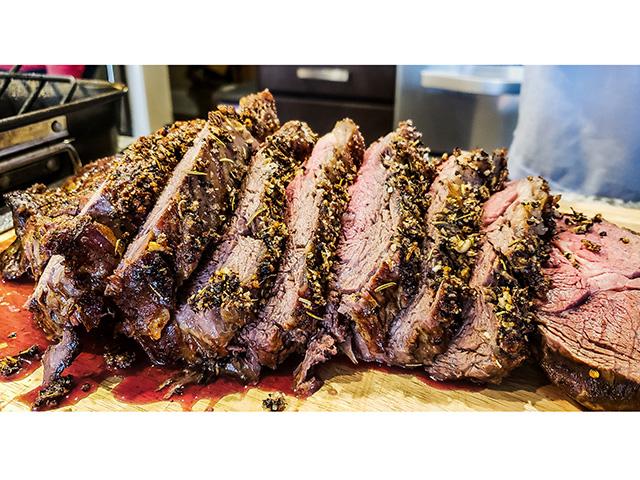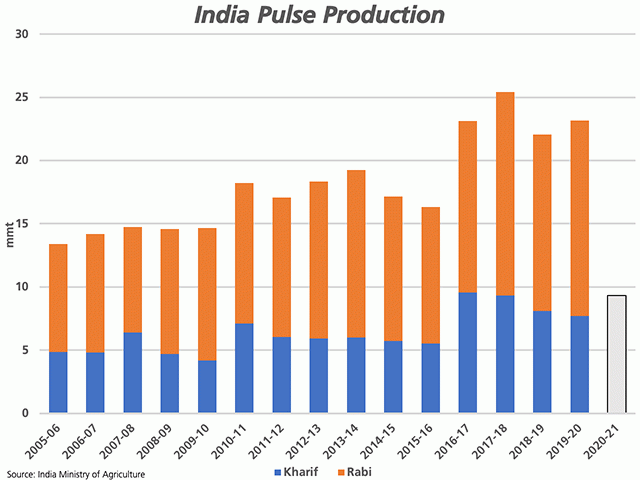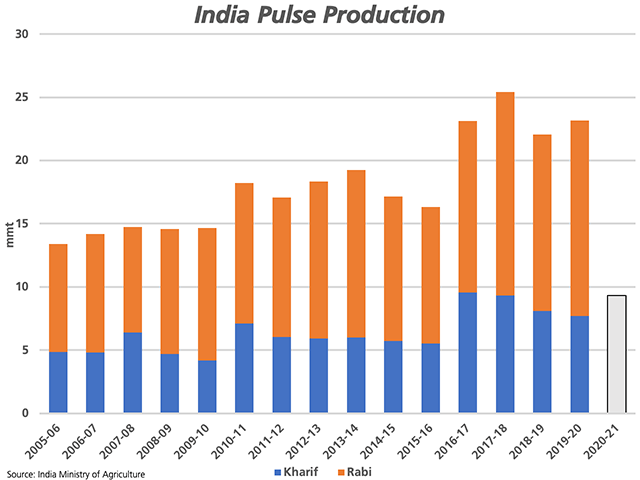Canada Markets
India Releases Summer Crop Estimates
India's ag ministry estimated the country's summer or kharif crop food grain production at a record 144.52 million metric tons (mmt), up 0.8% from the 2019-20 in Tuesday's First Advance Estimates for the 2020-21 crop year. This represents a volume of 6.76 mmt or 4.9% higher than the five-year average for this crop, which runs mostly from June through October.
India's kharif pulse crop is pegged at 9.31 mmt, which would be the highest in three years, equal to the volume estimated for 2017-18 and second only to the 9.58 mmt produced in 2016-17. This volume is 1.59 mmt or 20.6% higher than produced in 2019-20.
P[L1] D[0x0] M[300x250] OOP[F] ADUNIT[] T[]
Looking back over the past five years, final pulse production for the Kharif crop was lower in each of the past two years, averaging 9.25% below the First Advance Estimate in 2018-19 and 2019-20. In the two years before that, final Kharif pulse production was higher than the First Advance Estimate, averaging 8.5% higher for 2016-17 and 2017-18. In 2015-16, final production was 0.5% below the First Advance Estimate, while on average over the five years, final production averaged 0.4% lower.
It's also interesting to see the relationship between the Kharif production and the larger Rabi production over time. Over the past five years, Kharif production averaged 36.4% of total production for the year, which projects forward to total crop year production that would point to a record 25.9 mmt of total production for the 2020-21 crop year, which is in line with estimates for annual consumption.
In a piece written by G. Chandrashekhar for Miller Magazine, he points to India's pulse imports falling from a record 6.6 mmt in 2016-17 to 2.9 mmt in 2019-20, up slightly from the 2.6 mmt imported in 2018-19. Despite India's claims that the country is on the way to self-sufficiency in pulse production, the author notes that the per-capita availability of pulses is 14 kilograms per person, while nutritionists are recommending consumption of 20 kgs/person. This he states, would require an increase in domestic production of 25%-30% to roughly 30 mmt.
For this reason, the author expresses the need for India to ease import restrictions and maintain an ongoing presence in the global market by importing grain. A good example of the struggle faced is seen in India's move to reduce tariffs on imported lentils from 30% to 10% on June 2, to end on Aug. 31 (note: tariffs on U.S. imports are higher). On Aug. 31, this tariff returned to 30%, while was reduced to 10% once again on Sept. 21, to end on Oct. 31.
Cliff Jamieson can be reached at cliff.jamieson@dtn.com
Follow him on Twitter @Cliff Jamieson
© (c) Copyright 2020 DTN, LLC. All rights reserved.






Comments
To comment, please Log In or Join our Community .